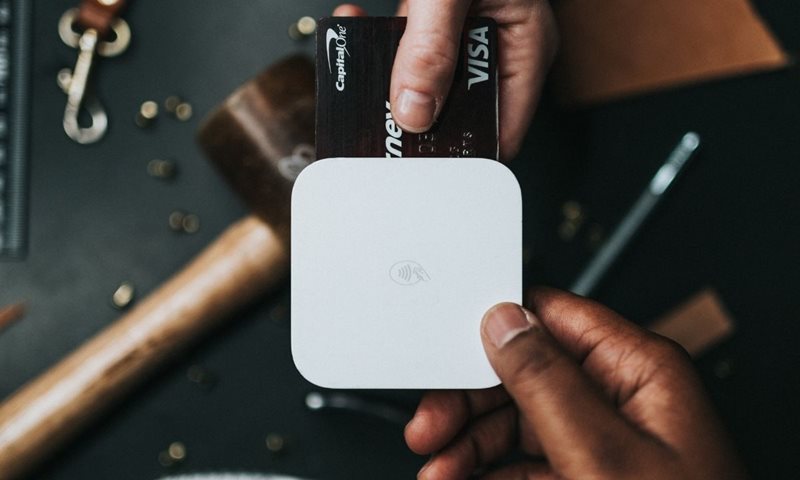Credit cards can be a real asset, if used properly. They’re a valuable tool for building credit. They can expand your purchasing power. They often come with lots of beneficial perks.
But, if you don’t use your credit cards responsibly — things can get out of hand quickly. Miss a payment and you can get socked with penalties and damage your credit. Don’t pay off your balance and you can accrue fees and end up paying way more for your purchases.
Review Your Credit Card Agreement & Make A Plan
Responsible credit card use begins before you even sign up for that shiny piece of plastic. You have to arm yourself with knowledge and a strategy. Understanding the credit card agreement and knowing how you’re going to use your credit card is key.

What To Look For in a Credit Card Agreement
There are a lot of credit cards available — each with its own conditions. When considering any one card, it’s important to read the documentation that relates to it.
Whether you see the credit card offer online or get it in the mail, one of the things you’ll find is a comprehensive credit card agreement. This is where you’ll find the interest charges on purchases, limits, credit card grace period, fees and penalties, etc.
You have to read through all this to know what you’re committing to.
Understanding Common Credit Card Terms
However, if you’re unfamiliar with the jargon in the agreement, it can be difficult to make sense of. Here are some terms you’re bound to come across and what they mean:
- Annual fee. This is the yearly cost for having the credit card. It’s akin to a membership fee or subscription. Not all credit cards have an annual fee.
- Annual percentage rate (APR). This is the interest rate you’re charged if you don’t zero out your credit card balance by the end of the billing cycle. As an enticement, some credit cards offer new card holders a lower introductory APR for a period of time. APRs can be fixed or variable (fluctuates with the prime rate) and may be different for purchases, cash advances, balance transfers, etc.
- Balance transfer. This is when you move the debt from one credit card to another. People often move balances around to take advantage of more favorable interest rates or terms with the “moved to” credit card. Sometimes there’s a fee to do a balance transfer.
- Billing cycle. This is the period of time between credit card billing statements. By law, this interval must be at least 21 days long.
- Cash advance. This is when you withdraw money against your credit limit. Typically accompanied by higher interest rates and fees, cash advances are costly.
- Credit card grace period. This is the span of time between the close of the billing cycle and payment due date. During this window, you will not accrue additional interest on the balance due. Grace periods can vary from card to card but must be at least 21 days long.
- Credit limit. This is the maximum amount you’re allowed to charge on your card.
- Deferred interest. Some credit cards defer interest on purchases made during a specified promotional period. This means you’re accruing interest from the date of purchase but it won’t be applied to your account until the promo period ends.
- Due date. This is the date by which you need to pay your monthly credit card bill.
- Late payment fee. This is a monetary penalty you have to pay for not paying your credit card bill on time.
- Minimum payment. This is the least amount of money you need to pay towards your monthly credit card balance.
- Promotions. Many cards offer promos to incentivize you to apply for or use their cards. Promotional periods, for example, usually offer lower interest rates or deferred interest. Other examples of promotions include extra reward points, gifts, exclusive access to events and services, etc.
- Residual interest. Also known as trailing interest, this is the interest charged on any balance you carry forward between billing cycles. So, if you don’t don’t pay your bill in full each month — that remaining balance will accrue fresh interest charges.
- Statement. This is a monthly report of the activity and status of your account. You’ll see all the charges and payments you made, balances due, payment dues date, minimum amount due, and more.
Make a Plan For Your Credit Card
Because you don’t see or feel the cash slipping from your wallet, using a credit card can make it seem like you’re spending funny money. To avoid falling into a spend-and-forget-it trap, it’s a smart idea to set yourself up for success in advance.
To that end, here are some suggestions:
- Make a budget and stick to it. Just because you aren’t physically handing over dollar bills doesn’t mean the digital ones you’re dispensing aren’t real. A budget will help you track how much money you have available to spend so that you can use your credit card and continue living within your means.
- Come up with purchase and repayment plans. If you’re opening a credit card to make a big purchase, map out how much you’ll need to pay each month to avoid paying interest. If you’re leaning towards a card with intro bonuses, think about how much you’ll need to spend in the given time horizon to claim them. Confirm that your purchases and repayments jibe with your budget.
- Opt for cards without annual fees. Most of the time most people can get away with a credit card that doesn’t assess a yearly fee. It’s one less expense to contend with.
- Keep receipts. Hang on to those sales slips! They’ll help you adhere to your budget, one purchase (or return) at a time.
- Set up account alerts, notifications, and reminders. These can help you stay on top of spending, upcoming payments, and more so you can more easily stay on top of everything.
- Check your account activity and statements. Review your account at least once a month to make sure there aren’t any errors.
- Use technology to your advantage. Making mobile or online payments is cheaper, easier, and faster than writing out a check and sending it via the mail.
Understanding Fees & Interest Charges on Purchases
Credit cards are like personal loans. The card issuers are the lenders. They’re going to make you pay for borrowing their funds. And, any charges you make — you’re going to have to repay them.
So, how’s this work exactly?
Up-Front & Flat Fees
These include any annual fees, application fees, balance transfer fees, etc. Not all credit cards make you pay fees. But it’s something to be aware of.
Interest Charges on Purchases & More
Your main concern is going to be interest fees on the stuff you buy. After all, this is probably the primary and most recurring way you’ll use your card.
Knowing how credit card interest is computed will serve you well. We’ll explain using a simplified example. Let’s say you have $1,000 balance when your billing cycle ends and your card has an APR of 15%.
Step 1: Calculate the daily periodic rate.
The DPR is the portion of the APR you accrue each day you have a balance. To get the daily rate, you divide the APR by the number of days in the year.
0.15 / 365 days = 0.00041 (aka 0.041%)
Step 2: Calculate the daily interest accrued.
This is done by multiplying the daily rate, by your average daily balance.
0.00041 x $1,000 = $0.41
Step 3: Calculate the interest charge for the billing period.
To find out the finance charge for the month, multiply the daily interest amount by the number of days in the billing cycle.
$0.41 x 30 days = $12.30
Step 4: Compare the interest obligation of carrying a balance vs paying off your balance.
The point here is just to illustrate the value of zeroing out your credit card debt each month.
Interest charge on $1,000 balance: $0.41 x 30 days = $12.30
Interest charge on $0 balance: $0 x 30 days = $0
Interest, while possibly at different rates, will be assessed similarly for balance transfers and cash advances.

11 Tips for How To Avoid Paying Interest On Your Credit Card
- Budget and plan ahead for large expenditures. Understand and account for how major credit card purchases will impact your cash flow.
- Don’t overspend. This is like the “ounce of prevention.” The less you use your card, the less chance you have of racking up interest.
- Avoid taking cash advances if possible. With higher interest rates, credit cards make for a pricey way to get hard money.
- Only take on as much credit as you can afford. Rightsizing your credit limit to your financial goals, obligations, and abilities can help you steer clear of temptation to buy more on your credit card than you can pay back each billing period. If your circumstances or needs change over time, you can usually work with your creditor to revise your credit limit.
- Use credit cards with 0% introductory rates. These cards forgo charging interest for a specified period of time for new accounts.
- Take advantage of balance transfers with 0% interest promotions. This can be a strategic way to avoid carrying balances on other credit cards with higher interest rates.
- Make your payments on time. It’s the only way to prevent expensive late payment fees.
- Pay your balance in full every month. If your balance at the beginning of each billing period is $0, there’s nothing for the card issuer to charge interest on!
- Make multiple payments per month. If a single lump sum seems undoable, maybe breaking it into two or three payments will help.
- Pay off balances before the end of the promotional period. By paying purchases off in full before the promotional period closes.
- Set up automatic bill payments. Depending upon how you go about it, you can schedule an exact dollar amount, the minimum payment due, or the full balance. Autopay ensures you never miss a payment.
Valley Credit Union, Helping You Manage Your Credit Card Spending
One perk of being a VCU member is that you have access to our full line of banking and loan products, services, and resources. This includes expert financial guidance to help you be a savvier credit card user.
It also means you can take advantage of Valley Credit Union’s exceptional credit card offerings. With three different options — there’s a card suited to you. Plus, you’ll discover that, compared to other financial institutions, our rates, fees, and monthly minimum payments are lower.
Responsible spending is pivotal for financial success. Connect with us today to see how we can help you do that with the best credit cards and tools on the market.
About the Author

 Justin Roberts, Vice President of Lending
Justin Roberts, Vice President of Lending
Justin Roberts is our Vice President of Lending and has been in the financial industry for over 18 years. He is an Oregon State University Graduate and has just completed Western CUNA Management School. When he is not focused on helping the members at Valley, you will find him coaching his two sons and volunteering his time to help develop the youth in our communities through sports.